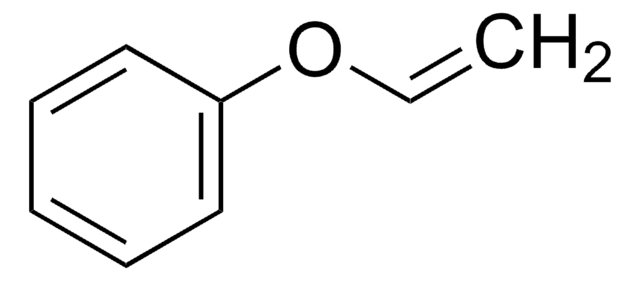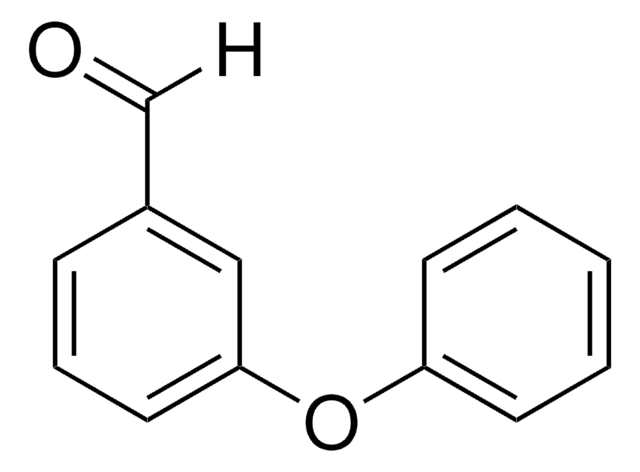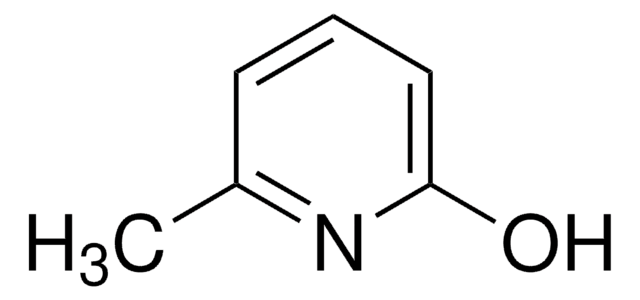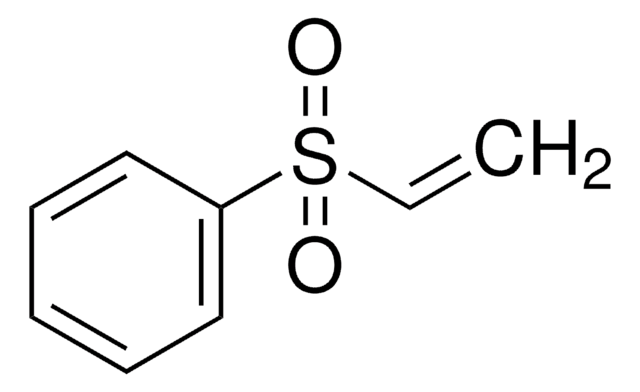278351
Isobutyl vinyl ether
contains 0.1% potassium hydroxide as stabilizer, 99%
Synonym(s):
Vinyl isobutyl ether
Sign Into View Organizational & Contract Pricing
Select a Size
All Photos(1)
Select a Size
Change View
About This Item
Linear Formula:
(CH3)2CHCH2OCH=CH2
CAS Number:
Molecular Weight:
100.16
Beilstein:
1560159
EC Number:
MDL number:
UNSPSC Code:
12162002
PubChem Substance ID:
NACRES:
NA.23
Recommended Products
vapor density
3.45 (vs air)
Quality Level
vapor pressure
68 mmHg ( 20 °C)
Assay
99%
form
liquid
contains
0.1% potassium hydroxide as stabilizer
refractive index
n20/D 1.395 (lit.)
bp
82-83 °C (lit.)
mp
−112 °C (lit.)
density
0.768 g/mL at 25 °C (lit.)
Looking for similar products? Visit Product Comparison Guide
General description
Isobutyl vinyl ether (IBVE) is a vinyl ether monomer that finds wide application in the polymer industry. It is utilized in various applications such as adhesives, coatings, sealants, ink production, elastomers, agricultural chemicals, and specialty polymer formulations due to its desirable properties, including high reactivity, oxygen permeability, good solvency, and crosslinking capability. It is also used in various Biomedical Applications which include, drug delivery systems, tissue engineering, and biocompatible coatings.
Signal Word
Danger
Hazard Statements
Precautionary Statements
Hazard Classifications
Aquatic Chronic 3 - Flam. Liq. 2 - Skin Irrit. 2
Supplementary Hazards
Storage Class Code
3 - Flammable liquids
WGK
WGK 3
Personal Protective Equipment
dust mask type N95 (US), Eyeshields, Gloves
Choose from one of the most recent versions:
Already Own This Product?
Find documentation for the products that you have recently purchased in the Document Library.
Customers Also Viewed
Christopher L Rock et al.
Dalton transactions (Cambridge, England : 2003), 48(2), 461-467 (2018-11-30)
The phosphine-substituted α-diimine Ni precursor, (Ph2PPrDI)Ni, has been found to catalyze alkene hydrosilylation in the presence of Ph2SiH2 with turnover frequencies of up to 124 h-1 at 25 °C (990 h-1 at 60 °C). Moreover, the selective hydrosilylation of allylic
Our team of scientists has experience in all areas of research including Life Science, Material Science, Chemical Synthesis, Chromatography, Analytical and many others.
Contact Technical Service












